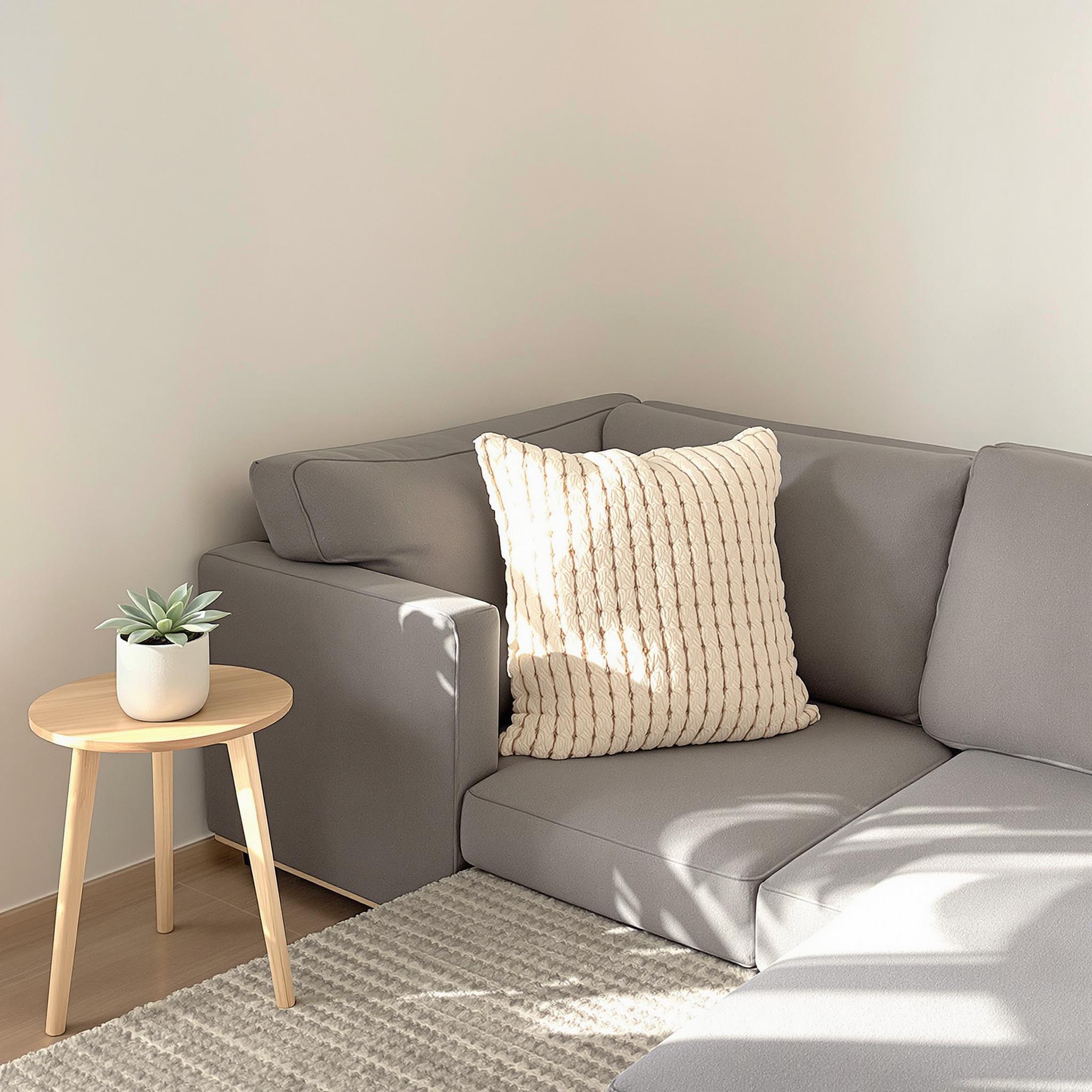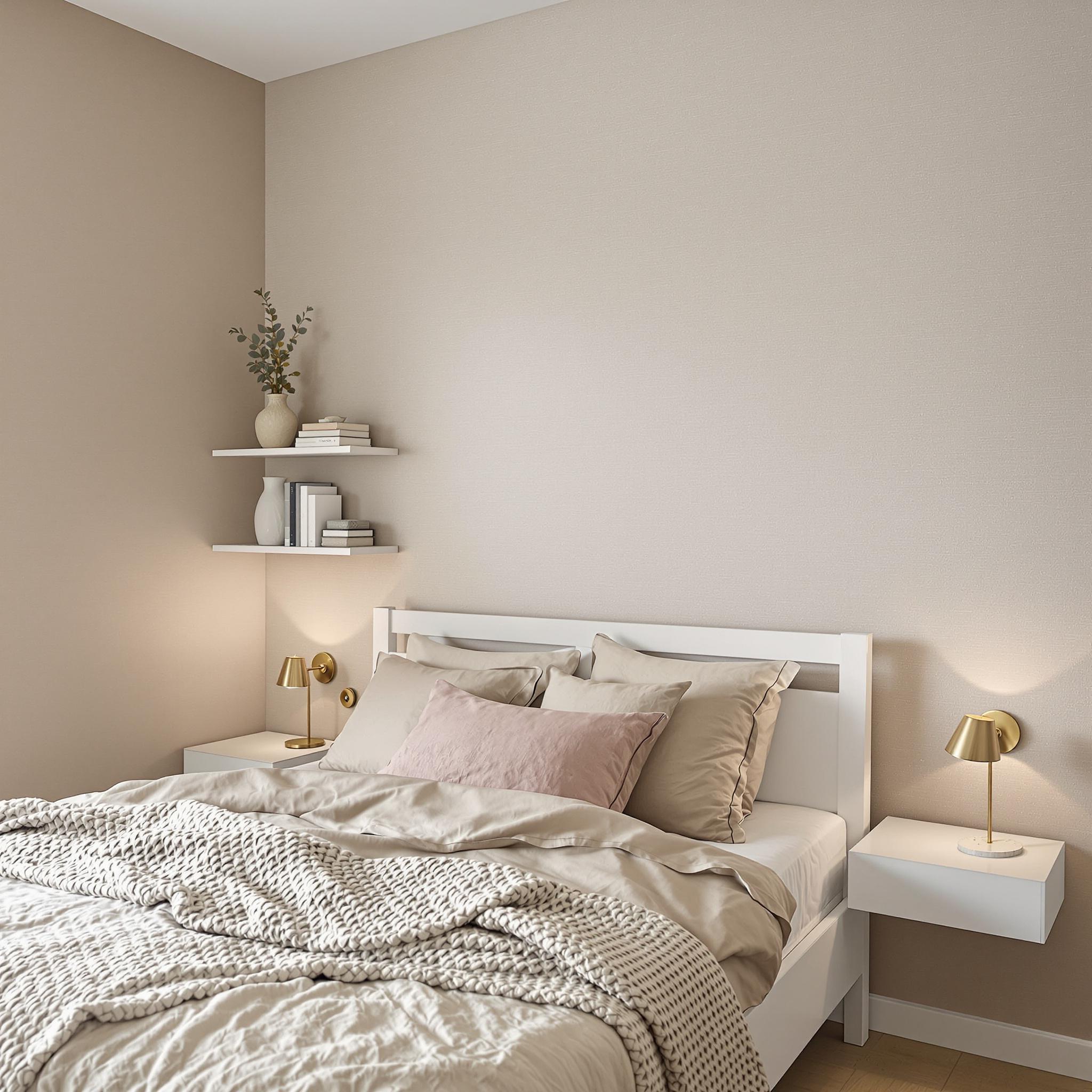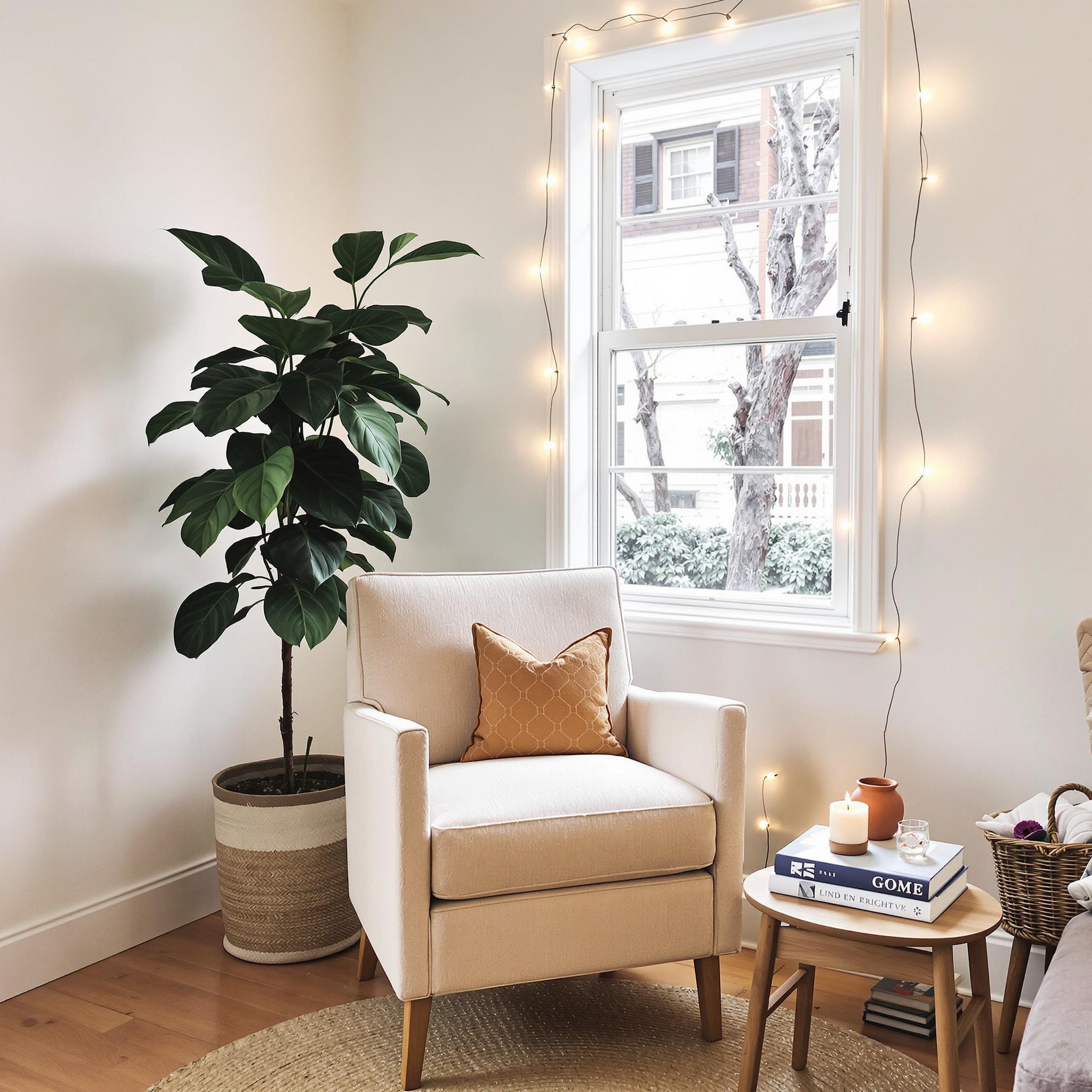What is Minimalism and Why Does It Matter?
Minimalism is about keeping things simple. It focuses on what truly matters. The core idea? Less is more. You remove excess to make room for clarity.
Key principles of minimalism include:
- Focusing on function over decoration.
- Choosing quality over quantity.
- Keeping spaces clean and organized.
A personal example: I once owned too many mugs. They cluttered my small kitchen. After adopting minimalism, I kept only my favorites. Suddenly, the space felt lighter and easier to use.
Minimalism isn’t just about looks. It’s a mindset. You let go of what you don’t need. This creates calm in your home and mind.
How Minimalism Transforms Small Spaces
Small rooms often feel cramped. Too much stuff makes them chaotic. Minimalism solves this issue by cutting down clutter.
Here’s how it works:
- Remove unnecessary furniture and decor.
- Use multi-functional pieces, like a storage ottoman.
- Stick to a neutral color palette to create openness.
For instance, a friend struggled with her tiny living room. She had shelves filled with knick-knacks. Once she pared down, the room felt airy. Light flowed better. Her space became inviting.
Minimalist design tricks the eye. It makes small areas appear larger. Clean lines and open surfaces help achieve this effect.
The Psychological Benefits of Minimalism
Clutter affects your mood. A messy space can stress you out. Minimalism offers relief by simplifying your surroundings.
Research shows that tidy spaces boost focus. They also lower anxiety. When your home feels calm, your mind follows.
I noticed this myself. My bedroom used to overflow with clothes. Every morning felt overwhelming. After decluttering, I woke up feeling lighter. My mornings became peaceful.
Minimalism also encourages mindfulness. You think twice before buying. This saves money and reduces waste. Over time, you value experiences over things.
Challenges of Styling Small Spaces
Minimalism sounds simple, but small spaces come with hurdles. Here are common issues:
- Limited storage options.
- Finding furniture that fits without crowding.
- Balancing style with practicality.
Take my first apartment. I tried to squeeze in a bulky desk. It made the room feel smaller. Switching to a wall-mounted desk solved the problem.
Lighting is another challenge. Poor lighting can make a room feel gloomy. Use mirrors to reflect light. Choose lamps that brighten corners.
Color choice matters too. Dark walls can shrink a space. Light tones open it up. But don’t shy away from accents. A pop of color adds personality.
Styling small spaces takes trial and error. Start small. Swap items one at a time. See what works best for your needs.
Choosing a Neutral Color Palette for Your Minimalist Small Room
Neutral colors have always been my go-to. They’re like that dependable friend who quietly makes everything better. If you’re designing a minimalist small room, neutrals are your safest choice. Whites, creams, grays, and soft beiges keep things calm and make the space feel bigger.
Stick with neutral tones for walls, floors, and big furniture pieces. This creates a clean base to build on. Think of it as starting with an empty plate before adding food. You can spice things up later with decor like pillows, rugs, or art prints. But remember, less is more.
If painting feels like too much work—or too pricey—try removable wallpaper. There are great options now with textures like linen or subtle patterns. I once turned my tiny studio into a peaceful retreat using taupe peel-and-stick paper. It made a huge difference.
Optimizing Furniture Selection: Multi-Functional Pieces Are Lifesavers
Furniture can make or break a small room. Big, bulky pieces eat up space fast. Instead, look for smaller items that still do their job. Bonus points if they multitask.
Take my old roommate Sarah. She lived in a tiny dorm but managed to fit a desk, bed, and storage thanks to a lofted bed frame with drawers underneath. Genius, right? Stores now sell ottomans with hidden storage, coffee tables that double as dining spaces, and more. Keep an eye out for these.
- Storage Beds: Great for hiding blankets, clothes, or shoes.
- Folding Tables: Perfect for workspaces or dining areas that need to vanish when not in use.
- Nesting Side Tables: Stackable and flexible for saving floor space.
Don’t forget proportions. A huge sectional might look good in a showroom, but it’ll choke a small room. Measure twice before buying anything.
Utilizing Vertical Space Effectively
We’ve covered colors and furniture, but what about vertical space? It’s often ignored, especially in small rooms. Leaving wall space unused is like wasting free real estate.
I learned this the hard way in my first apartment. The ceilings were high, but I kept piling stuff on the floor until it felt cramped. Then, someone suggested floating shelves. Lightbulb moment! Suddenly, I had spots for books, plants, and knick-knacks without losing floor space. Plus, they added visual interest.
If shelves aren’t your thing, try other vertical ideas. Wall hooks, pegboards, or tall bookcases work wonders. Funny story: I hung a bike rack on my wall, and it became a conversation starter. My room felt cleaner without the bike leaning in a corner.
Just don’t overload your walls. Leave some empty space to keep the airy, minimalist feel.
Incorporating Smart Storage Solutions
Now, let’s talk storage. Clutter kills minimalism faster than anything else. But smart storage doesn’t mean boring bins under the bed. It’s way more creative—and fun.
Baskets are lifesavers. Woven ones add warmth while hiding clutter like cables, remotes, or random junk. I use them in my living room for magazines, throws, and toys for my nephew.
Another trick is furniture with hidden storage. Ottomans, benches, and stools with lift-up tops can stash board games or seasonal decorations. Oh, and labels. They save time and sanity. Clear bins are great too—you can see what’s inside without digging.
Random note: I dated a guy who alphabetized his pantry. While I wouldn’t go that far, a little organization helps.
Integrating Thoughtful Decor That Aligns With Minimalist Aesthetics
Finally, the fun part—decor! This is where you add personality to your room. Just remember, less is more. Each piece should serve a purpose, functional or aesthetic.
Start with lighting. Good lighting transforms a dull space. String lights, floor lamps, or sconces soften harsh corners. I love salt lamps—they give off a warm glow that relaxes me after a long day.
Artwork is key, but don’t fill every inch of wall space. One large piece works better than many small ones. Abstract or monochromatic art blends well with minimalism. And mirrors? They’re magic for making rooms feel bigger. Place one across from a window for instant depth.
Greenery is a must. Plants purify the air and look great. Snake plants, pothos, or succulents are low-maintenance. My snake plant survived two moves and zero sunlight. Talk about tough!
Confession: I used to overdo decor. Too many candles, frames, and random knick-knacks. Eventually, I realized simplicity feels lighter. Now, I stick to three rules: love it, need it, or lose it. Works every time.
Final Thoughts Before Wrapping Up
Styling a minimalist small room isn’t complicated, but it does take thought. From colors to multi-functional furniture, every choice matters. It might feel overwhelming at first, but it gets easier—and more rewarding.
Funny enough, minimalism taught me to value quality over quantity—not just in my home, but in life. So, take a deep breath, declutter, and watch your space transform. A well-designed room should bring joy, not stress.
Keeping It Cozy: How to Add Warmth and Personality to Minimalist Spaces
Minimalism often gets labeled as cold or impersonal. But that’s not the whole story. It’s about finding balance. You can keep it simple while still making your space feel like home. Layer textures, play with lighting, and add personal touches. I learned this the hard way. I once tried decorating my living room with just white walls, gray furniture, and one plant. Sure, it looked clean, but after a week, it felt like waiting for a root canal. Minimalism needs heart.
Start by mixing textures. Throw a chunky knit blanket over a sleek couch. Swap plain curtains for linen ones. These small changes make a big difference. Rugs are key too. A soft wool rug underfoot can turn a cold room into a cozy retreat. Funny story—I found an old Persian rug at a flea market. It was stained and frayed, but it gave my bedroom so much charm. Sometimes, imperfections are exactly what a space needs.
Natural Elements: Bringing Life Into Your Minimalist Home
Nature can breathe life into minimalist spaces. Plants and wood tones add warmth and calm. There’s something about greenery that makes a room feel alive. A tall fiddle-leaf fig or a cluster of succulents on your coffee table works wonders. Plus, plants are great conversation starters. Who doesn’t love swapping houseplant tips?
Wood tones are another winner. Wooden shelves, side tables, or picture frames add warmth without clutter. I swapped my plastic cutting board for a teak one, and suddenly chopping veggies felt more meaningful. Nature grounds us, and adding these elements to your home does the same.
If you’re not great with plants, go for low-maintenance options like snake plants or pothos. They’re nearly impossible to kill. Dried flowers or branches in a vase also work if you don’t want the upkeep. Whatever you choose, let it reflect you. A little personality goes a long way.
Lighting: Setting the Mood Without Overdoing It
Lighting is crucial. Harsh overhead lights? Nope. Soft, layered lighting? Yes. Start with a statement piece like a pendant light or chandelier. Then add floor lamps or table lamps to create cozy spots. String lights aren’t just for dorms. Drape them around a bookshelf or window for instant ambiance.
Candles are a must. They smell great, look inviting, and cast a warm glow. I always keep a few pillar candles around for lazy Sundays. Scented candles also boost your mood. Lavender for calm, citrus for energy—you get it.
Natural light is your best friend. Keep windows clear during the day. Use sheer curtains to soften glare. If privacy is an issue, frosted window film is a smart fix. My apartment overlooks a busy street, so I installed some. It made a huge difference. Bright, airy spaces feel bigger and happier, which is what minimalism is all about.
Staying Clutter-Free While Evolving With Your Needs
Let’s face it—keeping a clutter-free space isn’t easy, especially as life changes. Kids, pets, hobbies—they all bring stuff. But you can adapt without losing the minimalist vibe. Here’s how:
- Edit regularly: Every season, take stock of what you own. Donate items you don’t use or love. Be tough—if you haven’t touched it in six months, ditch it.
- Invest in smart storage: Baskets, bins, and ottomans with hidden compartments are lifesavers. Store rarely used items out of sight to keep surfaces clear.
- Adopt a “one in, one out” rule: For every new item you bring home, let something else go. This keeps clutter in check and prevents overwhelm.
I used to hoard magazines thinking I’d read them someday. Spoiler: I didn’t. One day, I recycled the whole pile. Guess what? I haven’t missed them once. Letting go feels amazing.
Be flexible. Minimalism grows with you. Maybe you start collecting art or pick up woodworking. That’s fine! Just curate carefully and display pieces that matter to you. Adaptation keeps your space functional and meaningful.
Final Thoughts: Making Minimalism Work for You
At its core, minimalism is about creating a space that supports your life and reflects who you are. It’s not about perfection—it’s about intention. Whether you’re adding a cozy throw, bringing in a plant, or tweaking your lighting, make choices that feel right for you. Your home should be a sanctuary, not a showroom.
Frequently Asked Questions About Enhancing Minimalist Spaces
- How do I avoid making my minimalist space feel too cold?
Add warm textures like rugs, cushions, and throws. Use natural materials like wood and stone. Soft lighting helps too. - What are some good low-maintenance plants for beginners?
Snake plants, pothos, ZZ plants, and succulents are great. They need little water and thrive in various lighting conditions. - Can I mix styles with minimalism?
Absolutely! Try blending modern furniture with vintage accessories or industrial elements for a unique look. - How often should I declutter?
Seasonal decluttering works well. If clutter builds up, tackle it sooner rather than later. - Where should I splurge when designing a minimalist space?
Invest in quality furniture and lighting. These pieces last longer and elevate your home’s look. - Is it possible to have kids and still maintain a minimalist home?
Yes! Use clever storage solutions and involve kids in tidying routines. Focus on toys and items they actually use. - How do I incorporate art into a minimalist design?
Choose a few standout pieces that speak to you. Gallery walls work too, as long as they’re thoughtfully curated. - What colors work best in minimalist interiors?
Neutrals like whites, grays, and beiges are classic. Muted blues, greens, or terracottas add subtle pops of color. - Can I use patterned fabrics in a minimalist space?
Of course! Stick to simple patterns like stripes or geometrics. Limit their use to one or two areas to avoid overwhelming the space. - How do I prevent my minimalist space from feeling boring?
Mix textures, experiment with lighting, and rotate accessories seasonally to keep things fresh and interesting.



